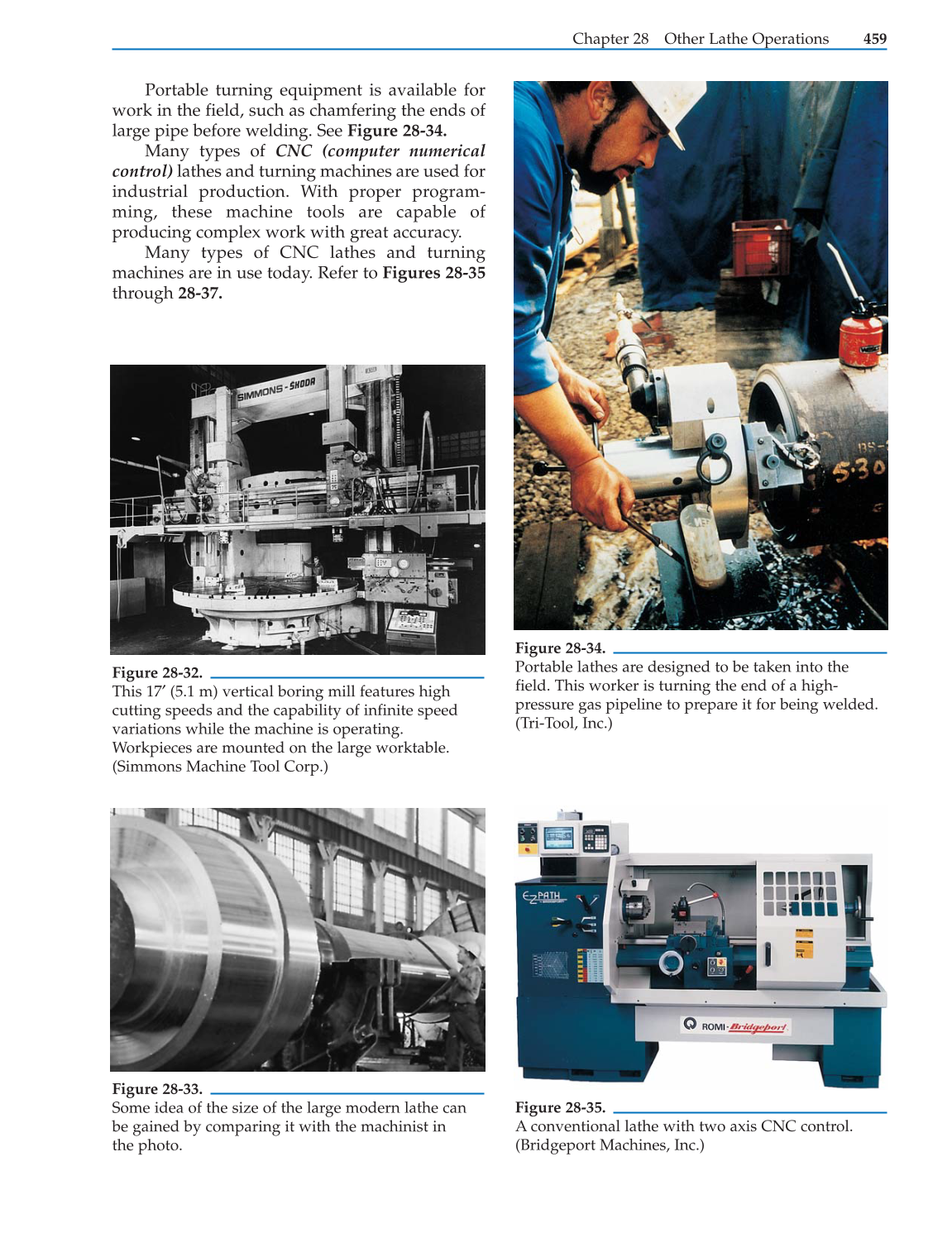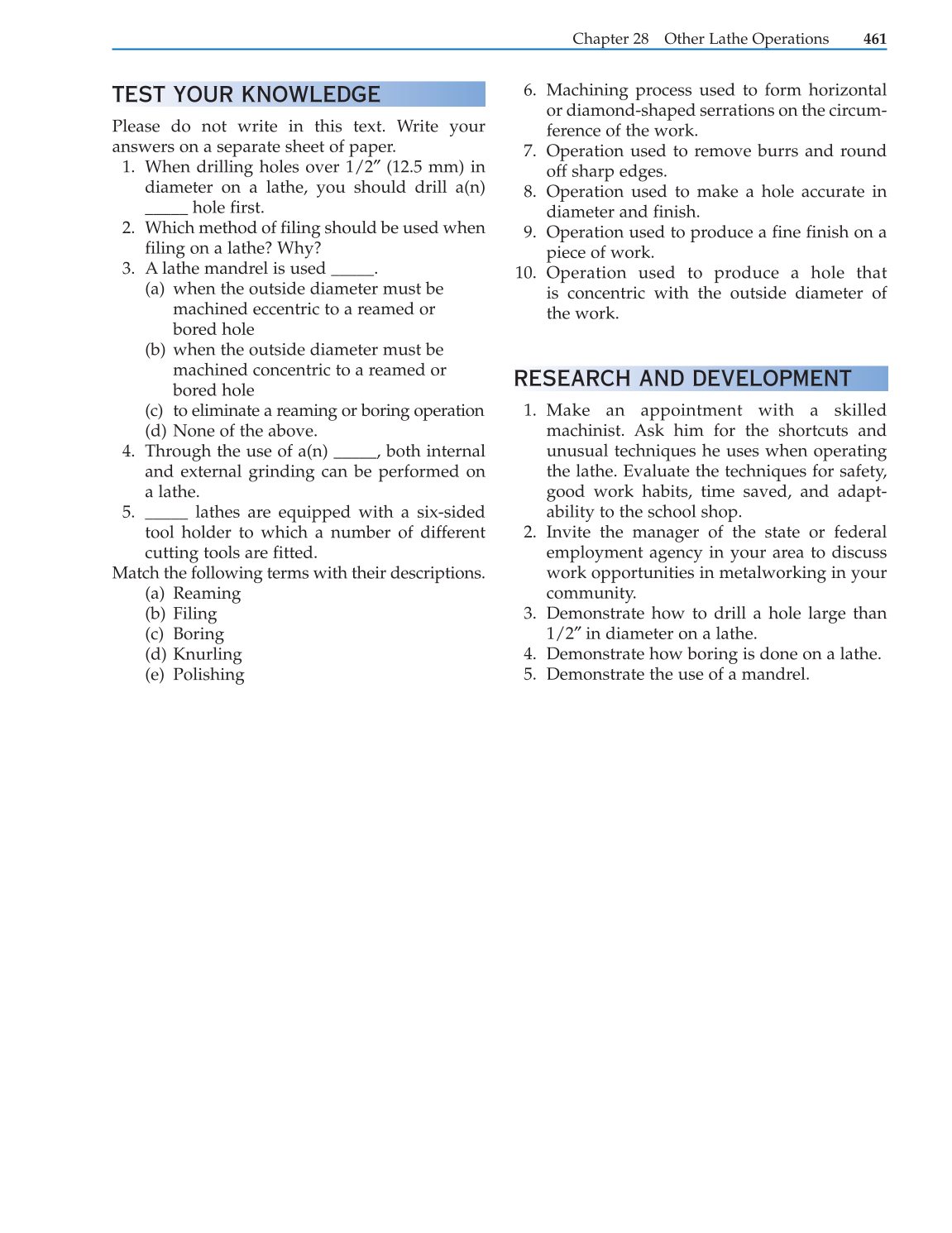28.9 LATHE SAFETY
Safety precautions are very important and
must always be practiced in the use of metals.
Safety practices cannot be overemphasized in
metalworking applications. To minimize hazards,
observe the following precautions at all times
when working with the lathe.
Do not attempt to operate the lathe until you
know the proper procedures and have been
checked out on its safe operation by your
instructor.
Dress appropriately. Remove your necktie,
sweater, wristwatch, necklaces, bracelets,
and rings. Long hair should be tied back and
kept out of the way. Wear an apron or a prop-
erly fitted shop coat. Safety goggles must
always be worn when using the lathe.
When filing on a lathe, make sure the file has
a securely fitting handle.
Clamp all work solidly. Use the correct size
tool or work-holding device for the job. Get
help if you must use heavy chucks or attachments.
Replace all guards before starting to work.
The guards should only be removed to make
adjustments, and then only with the power
turned off at the main electrical panel to
prevent the machine from being turned on
accidentally. Replace the guards immediately
after the adjustments have been made.
Turn the chuck or faceplate by hand to be
sure there is no binding or danger of the
work striking any part of the lathe.
Stop the machine before making adjustments
or measurements.
Do not run the cutting tool into the chuck or
dog. Check any readjustment of the work or
tool to be sure there is ample clearance when
the tool has been moved leftward to the
farthest point that will be machined.
Do not use cotton waste or rags to wipe
grease or oil from the work surface unless the
machine is stopped. Keep brushes used for
cleaning and applying coolant clear of work
when knurling.
Before repositioning or removing work from
the lathe, move the cutting tool clear of the
work area. This will prevent accidental cuts
on your hands and arms from the cutter bit.
You should always be aware of the direction
and speed of the carriage or cross-feed before
engaging automatic feed.
Never leave the key in the chuck. Make it a
habit to never let go of the key until it is out
of the chuck and clear of the work area.
Stop the machine immediately if some odd
noise or vibration develops while you are oper-
ating it. If you cannot locate the trouble, get
help from your instructor. Do not operate the
machine until the trouble has been corrected.
SUMMARY
There are many operations that can be
performed on the lathe. These operations include
drilling, reaming, boring, knurling, filing,
polishing, grinding, and milling operations. It is
the responsibility of the lathe operator to see that
they are performed properly and safely.
460 Modern Metalworking
Figure 28-36.
Multifunction CNC horizontal turning center. All
machining functions are computer controlled.
(Okuma America Corporation)
Figure 28-37.
A CNC Lathe with automatic bar feed. It has
hydraulic chucking and an electronically indexed
12-station turret. (Clausing Industrial, Inc.)


